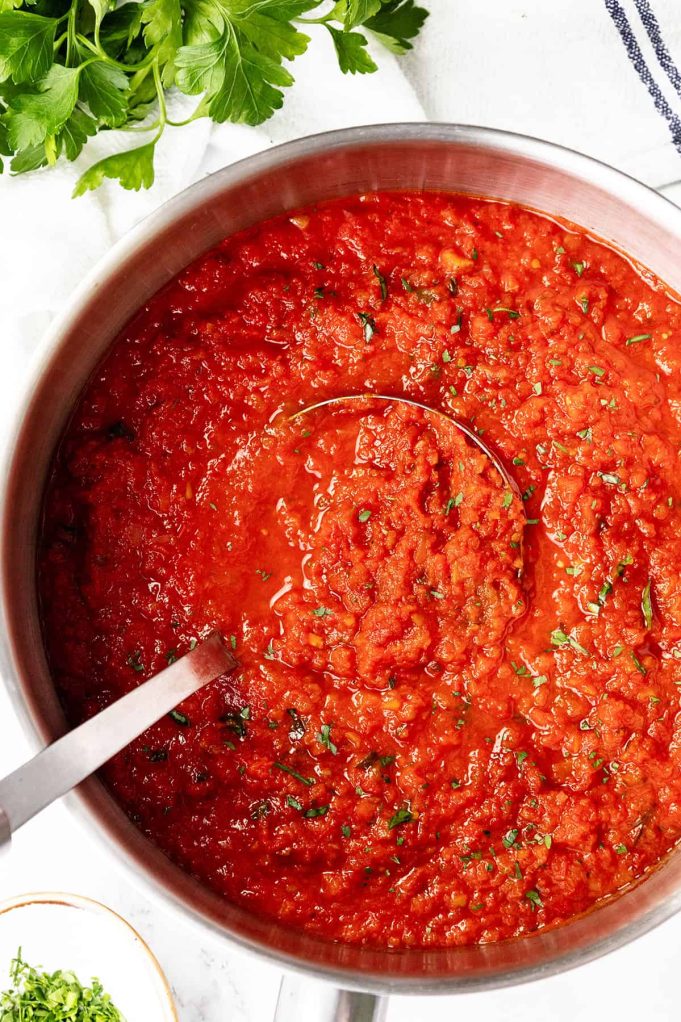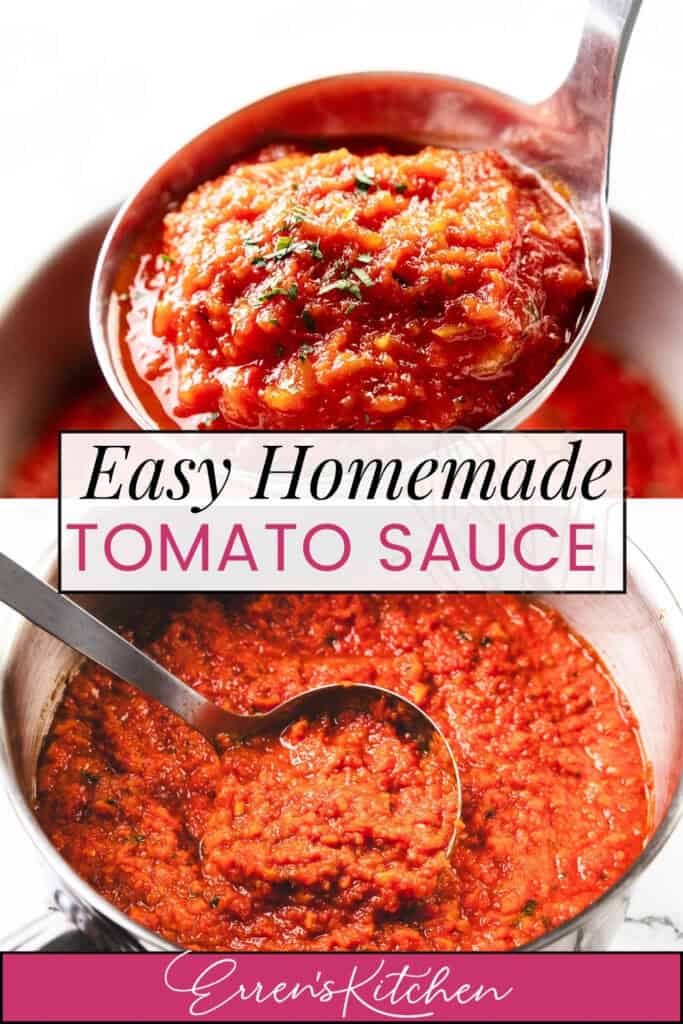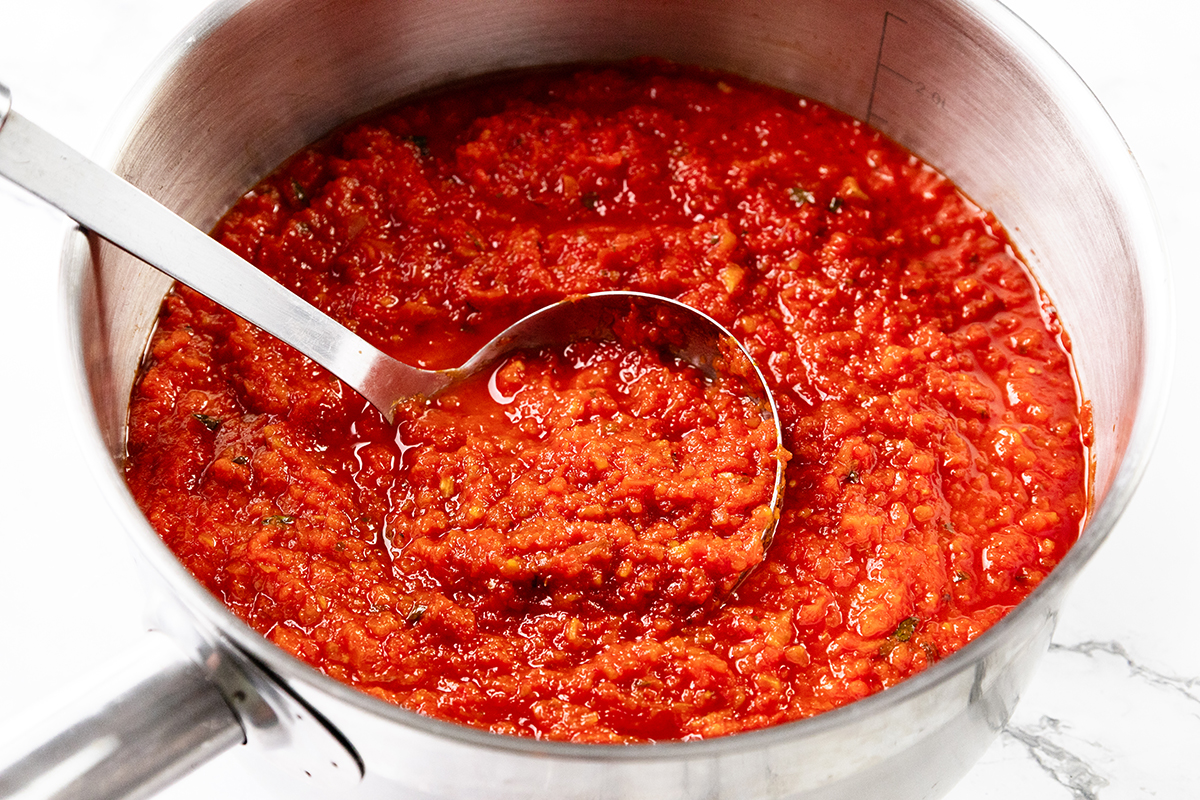
This site runs ads and generates income from affiliate links. Read my disclosure policy.
Originally posted in 2017. Updated in 2025 with fresh photos and helpful new details.
Rich, delicious homemade tomato sauce that’s perfect for pasta, pizza, or dipping. Easy, flavorful, and ready to upgrade any meal.
Know Before You Scroll
Onion, celery, carrots, olive oil, garlic, crushed tomatoes, flat-leaf parsley, basil, salt, pepper.
Fresh, bright, and herby with a natural sweetness from carrots and a little savory depth from garlic and olive oil.
Easy. A bit of chopping and simmering, but nothing fussy.
Food processor, large saucepan, wooden spoon, sharp knife.
Let the veggies cook down fully before adding the tomatoes—this builds that rich, slow-simmered flavor without needing hours.
This sauce gets even better after a day in the fridge. Perfect for meal prep or freezing for future pasta nights.
No fresh herbs? Use dried basil and parsley—just add them earlier in the cooking process so they have time to bloom.
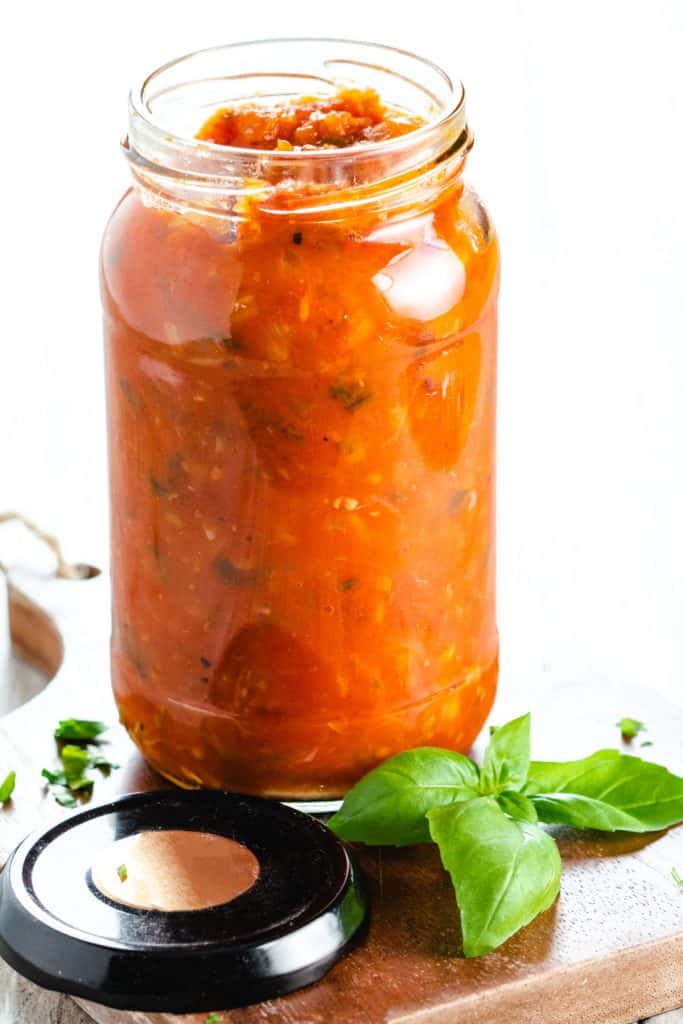

A Reader Favorite
I first shared this easy homemade tomato sauce in 2017, and it quickly became one of the most popular recipes on the blog. Since then, it’s racked up over 100 glowing five-star reviews, been shared nearly 100,000 times on social media, and become a true reader favorite. I’m updating it today with new photos and even more user-friendly details so it’s easier than ever to follow.
Carrots, celery, onions, and garlic make up the classic Italian soffritto—the flavorful base of a rich tomato sauce. Onions add sweetness, carrots balance the tomatoes’ acidity, celery adds depth, and garlic gives a savory kick. My Italian grandmother always started her sauce this way, turning canned tomatoes into a sauce that tastes like it simmered all day. Same classic flavor, just refreshed to keep things clear, simple, and helpful for busy weeknights.
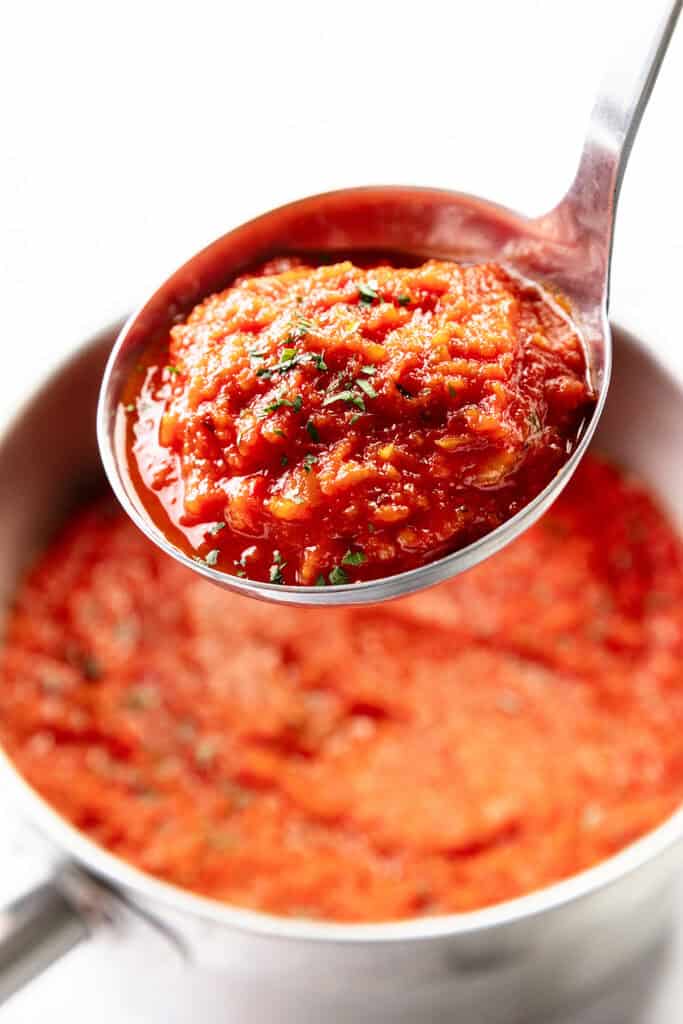

Ingredient Notes
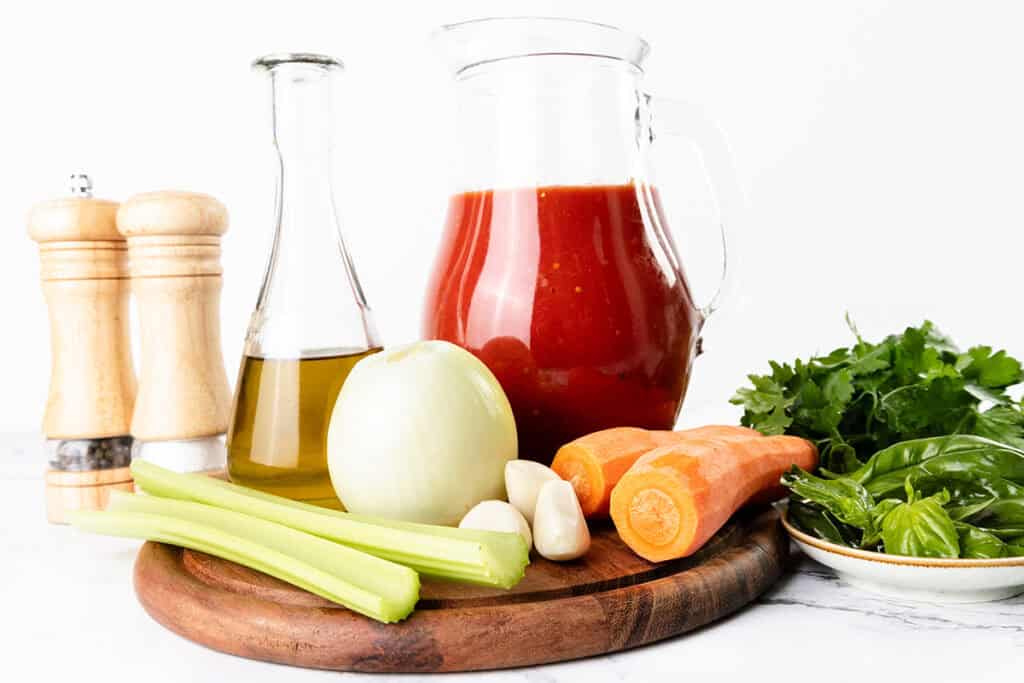

Whole canned plum or Roma tomatoes are usually the highest quality since they’re packed at peak ripeness. They can be easily crushed or pureed for the perfect texture. For the best flavor, look for authentic San Marzano tomatoes, which are sweet, low in acidity, and marked with a DOP seal on the can.
Pre-crushed canned tomatoes or tomato puree.
A yellow onion works best for its balanced sweetness and mild flavor once cooked down.
White onion for a sharper bite, or sweet onion if you like extra natural sweetness.
Fresh, firm stalks with leaves.
If needed, use a small pinch of celery seed for similar flavor.
Whole carrots with the green tops still attached. They usually have better flavor and freshness compared to bagged carrots.
Baby carrots can be used if that’s what you have.
Fresh garlic cloves, firm and unbruised.
Pre-minced garlic from a jar (½ teaspoon per clove).
Using Fresh Tomatoes
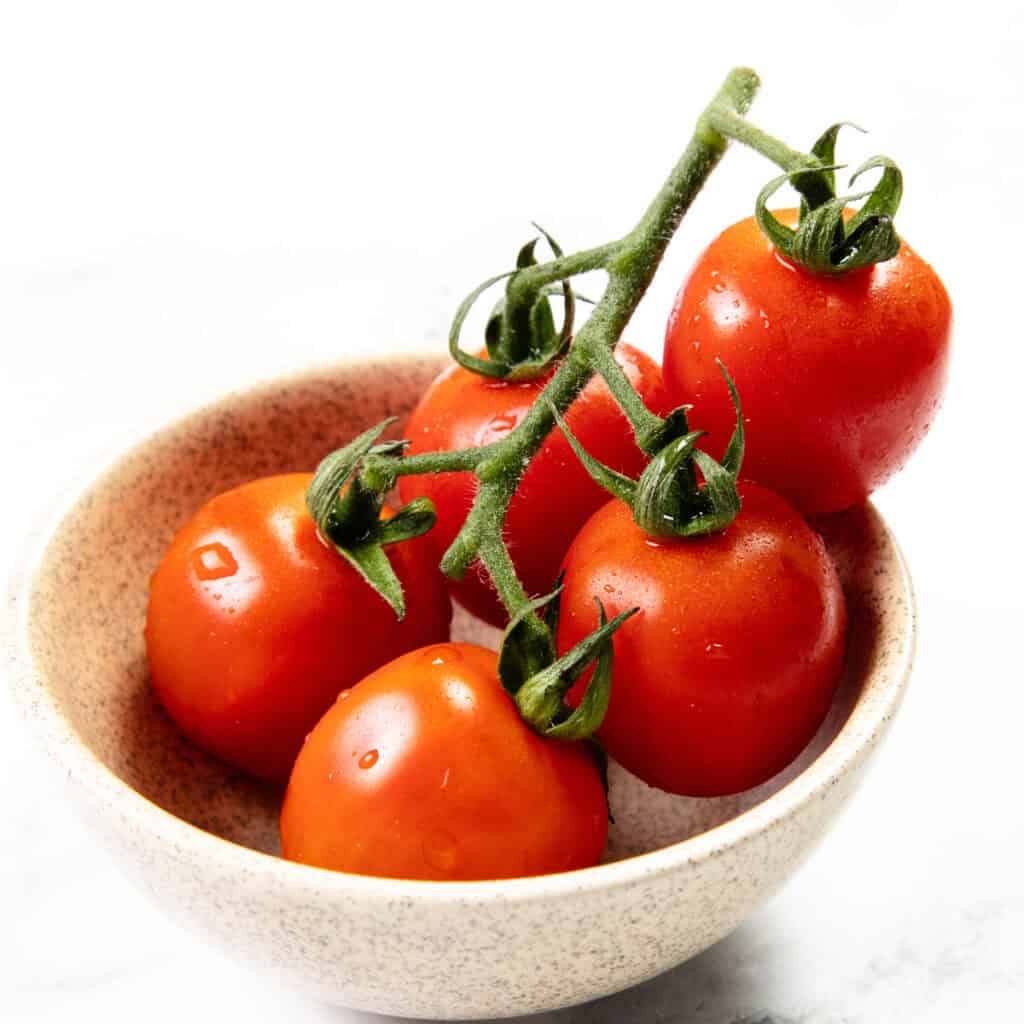

A simple way to use fresh tomatoes instead of canned in tomato sauce, remove the ends and cut them into quarters. Then coat with olive oil and salt and pepper and roast them at 400°F for 30 to 35 minutes (keep an eye on them if you don’t want them browned) then I puree the mixture until smooth. This is a great way to keep them from becoming too watery (although tomato paste may need to be added to thicken the sauce). Then use as you would canned tomatoes.
Use 1 lb of fresh tomatoes for every 14oz can (this recipe would need 4 lbs). For More detailed instructions, see my fresh tomato sauce recipe.
You can find the full, printable recipe at the top of this post, but you can read the detailed instructions with photos for each step below.
How To Make Homemade Tomato Sauce
Chop the Vegetables
Start with one medium onion, two stalks of celery, and two medium carrots. Peel, chop, and toss them into the food processor. A few quick pulses, and you’ve got the perfect base for your sauce.
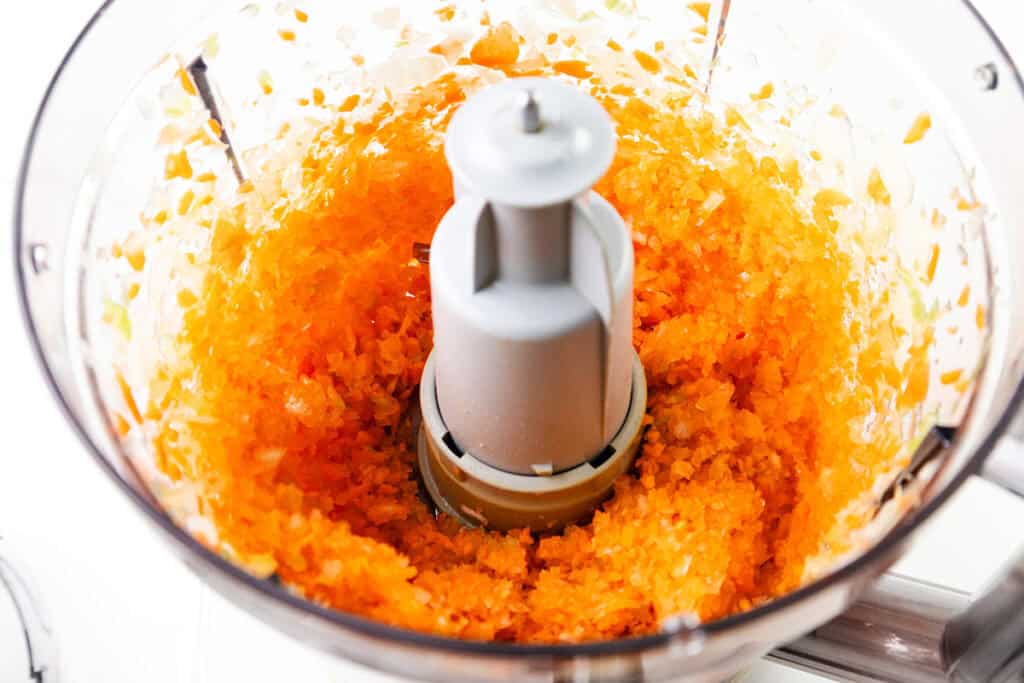

Sauté the Vegetables and Garlic
Heat two tablespoons of olive oil in a large saucepan over medium heat. Add the chopped onion, celery, and carrots, and cook until they’re soft and no liquid remains. Push the veggies to the side, add the last tablespoon of olive oil, and stir in three cloves of finely chopped garlic. Let it sizzle until lightly golden—just enough to bring out the flavor without burning.
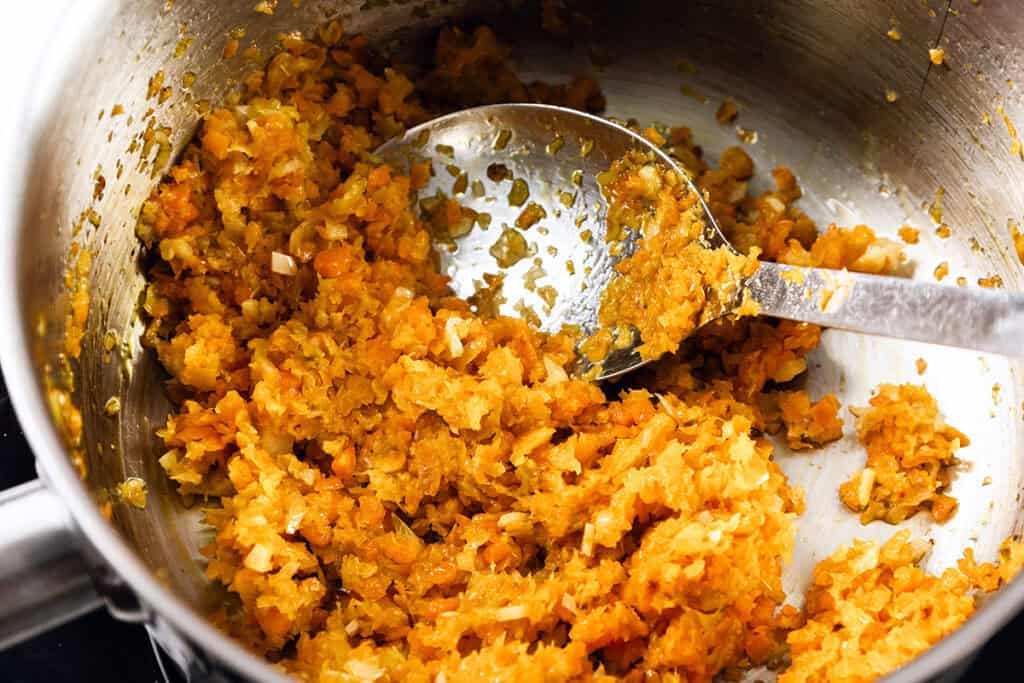

Stir in the Tomatoes and Herbs
Now add in two large cans—56 ounces total—of crushed tomatoes. Stir in a good handful of fresh parsley and another handful of fresh basil. Sprinkle in some salt and freshly ground black pepper. Bring everything to a boil, then turn the heat down and let it simmer for about 30 minutes.
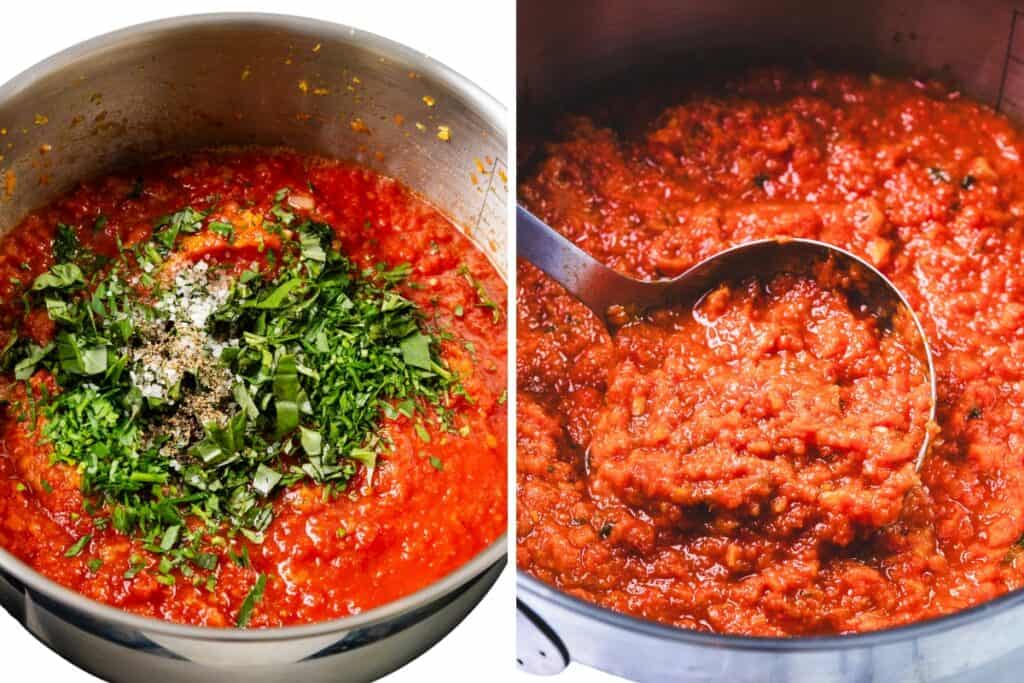

Adjust the Texture
For a silky smooth sauce, blend it in the food processor. If you like it rustic and chunky, just leave it as is. Both ways are delicious.
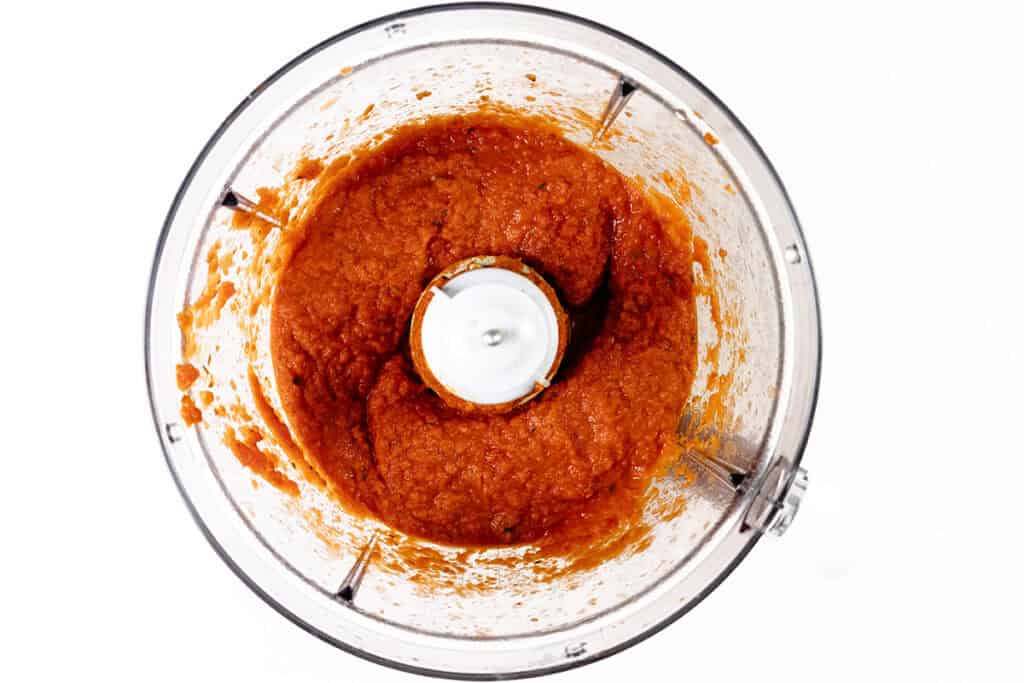

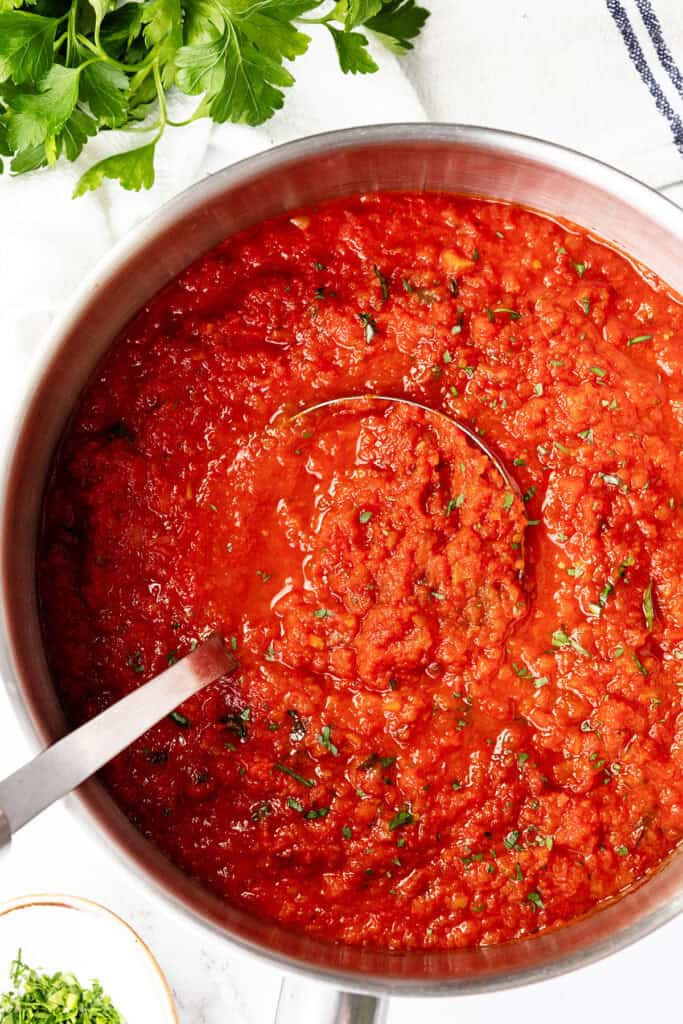

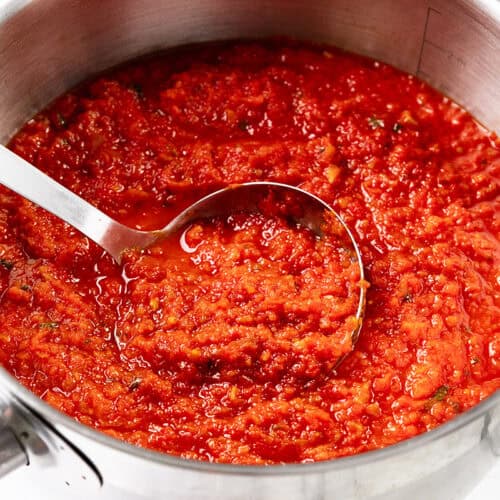

1x2x3x
Serves 4 servings
-
Add the onion, carrots, and celery and to a food processor and chop them into small pieces.
-
Heat 2 tablespoons of the olive oil in a large saucepan on medium heat and saute the onion, celery, and carrots until they are soft and no liquid is being released from them.
-
In the middle of the softened vegetables, form a well, and add the remaining olive oil, followed by the garlic. Allow the garlic to brown slightly (being careful not to let it burn).
-
Mix in the tomatoes and herbs.
-
Add seasoning, bring to a boil, lower the heat, and simmer for 30 minutes.
-
If you like a thinner sauce you can add it to the food processor and puree into your desired consistency or if you like a thicker sauce, skip this step.
Erren’s Top Tips
- Choose Your Texture: For a silky smooth sauce, run it through a food processor or blender once it cools slightly. For a rustic, hearty sauce, leave it as is.
- Don’t Skip the Veggie Base: Let the onion, carrot, and celery cook down fully before adding tomatoes. This step builds a naturally sweet, rich flavor and avoids watery sauce.
- Dried vs. Fresh Herbs: If you don’t have fresh parsley and basil, swap in dried. Just remember—dried parsley adds little flavor, so try oregano instead for a better match.
- Fixing Acidity: If your sauce tastes too sharp or bitter, stir in a tiny pinch of baking soda at a time. It neutralizes the acidity without masking flavor.
- Control the Thickness: Tomato sauce thickens as it simmers. If it gets too thick, loosen it with a splash of water or even a bit of pasta cooking water for extra flavor.
Storage & Freezing Instructions
- Refrigerator: Let the sauce cool completely, then store it in an airtight container in the fridge for up to 3 days. The flavor actually gets even better after a day or two.
- Freezer: Portion into freezer-safe bags or containers, leaving a little space for expansion. Freeze for up to 3 months. Thaw overnight in the fridge before reheating.
- Reheating: Warm gently on the stove over low heat, stirring occasionally. If the sauce is too thick, add a splash of water or broth to loosen it back up.
Using Fresh Tomatoes
To use fresh tomatoes you will need 4 lbs of tomatoes, cut into quarters, coat with olive oil and salt and pepper, and roast at 400°F for 30-35 minutes (keep an eye on them if you don’t want them browned) then I puree the mixture until smooth. This is a great way to keep them from becoming too watery (although tomato paste may need to be added to thicken the sauce). Then use as you would canned tomatoes.
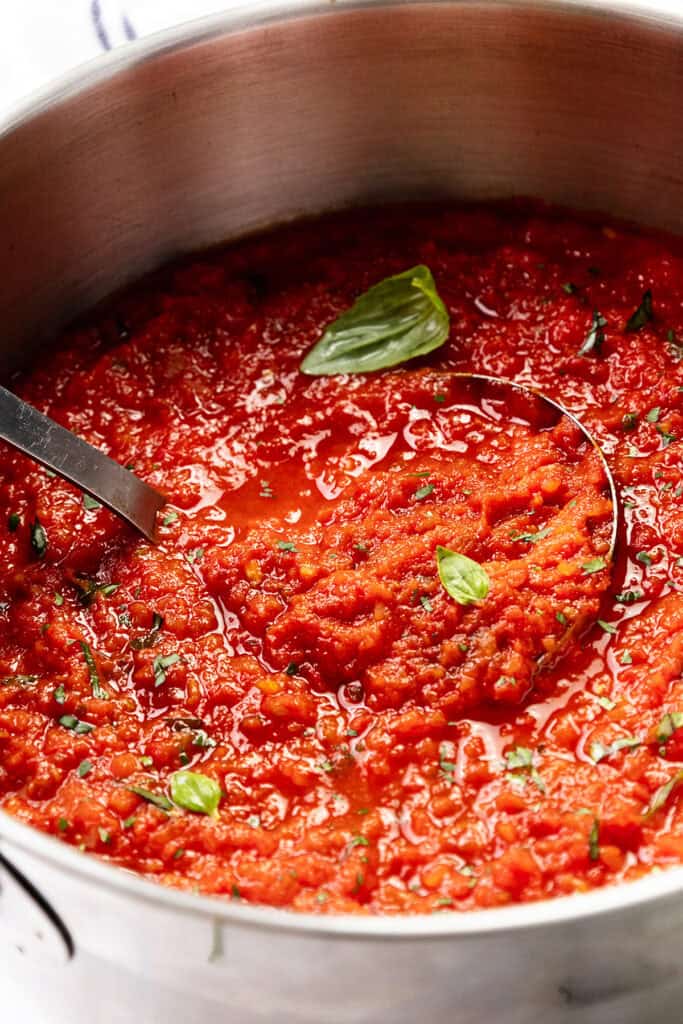

FAQs
Yes. Just finely chop the onion, celery, and carrots with a knife. The sauce will be slightly chunkier but still delicious.
What kind of tomatoes are best for sauce?
Whole canned plum or Roma tomatoes are best because they’re packed at peak ripeness. You can crush or puree them easily at home. For the richest flavor, look for authentic San Marzano tomatoes.
Can I double the recipe?
Absolutely. This recipe scales up well—just use a larger pot and allow a little extra time for the sauce to reduce.
Can I add meat to this sauce?
Yes! Brown some ground beef, pork, or Italian sausage first, remove it from the pan, and then follow the recipe as written. Add the cooked meat back in with the tomatoes.
How do you make tomato sauce thicker?
The best way to thicken tomato sauce is to reduce it by simmering uncovered until it thickens on its own.
Can homemade tomato sauce be frozen?
Yes, it can easily be made in large batches and frozen by separating it into airtight, freezer-safe containers and freezing for up to four months.

